Resources

Readers of T.R. Johnson’s ambitious The Other Side of Pedagogy: Lacan’s Four Discourses and the Development of the Student Writer will find some unexpected juxtapositions: Ouija boards and zombies side by side with Hannah Arendt and Keith Richards, student writers jostling with hysterics and narcissists. From this amalgam of unlikely characters, Johnson’s more conventional thesis emerges: contemporary education lacks a sense of its goals, other than a vague notion that student development means initiating students into a loosely-defined ideal of the academy. Johnson suggests that we can rescue ourselves and our students from this stagnation by recognizing what has been there all along: the pulsing unconscious, the unbidden and ultimately irrepressible system of desire that we all carry around with us but like to pretend we do not. This evocation of the unknowable and uncanny is what mobilizes Johnson’s playful evocation of high and low culture. Johnson posits a model of student development based on Lacan’s famous lecture series of the late 1960s. Student writers, Johnson argues, move through four stages, as articulated by Lacan in his theory of the four main types of discourse. In the first two stages, the discourses of mastery and of the University, students are passive receptacles of teacherly authority, their unconscious ideally repressed and their prose, when they can write at all, “empty mimicry” (133). The last two discourses are where things get really interesting. The third discourse is that of the hysteric, whose appearance is “a singularly disruptive performance . . . wreaking havoc with the conventional, lockstep procedure of the bureaucracy, as when Marlon Brando’s character in The Wild One, when asked what he is rebelling against, responds ‘Whaddya got?’” (195). Here, Johnson offers a useful reframing of the problem student, the eye-roller, the note-passer, the interrupter. Instead of understanding these students as impediments to classroom coherence, Johnson casts them as paradoxically more advanced than the good student who always has the right answer. These disruptive students are engaging the unconscious when they exceed and unsettle the roles prepared for them, the social assumptions about who and what they ought to be. However, like Keith Richards writing “I Can’t Get No Satisfaction” in his sleep, the hysteric cannot control his or her discourse, but rather “stumble[s] in a narcotic dream from one summit to the next” (188). The final discourse is that of the analyst, a discourse marked by humility, openness, and equality. To explain this discourse, Johnson imagines a class in which students and teacher listen carefully to one another and thus arrive at unexpected and unplanned places, a class in which students write papers that put multiple texts in conversation with one another to see what emerges. These students and teachers harness the unconscious to the extent that they are engaged in dialogue with the other. If we seek to sustain these productive engagements, we must realize that “the aim of our courses is ultimately to teach our students to love – specifically, to love working and playing with words and texts and ideas, and, through these, to love each other, the wider world, and the ideal of justice, more and more and more” (207). These are inspiring words, and perhaps the most evocative explanation I’ve ever heard of why pedagogical practices like service learning and community engagement – which court unexpected moments of empathy and, ideally, writing and thinking that resonate beyond the self and the stale loop of teacher-oriented writing – are so critical to breathing life into our institutions. One of Johnson’s most powerful contributions in this book is his insistence on seeing students and teachers as complex, embodied people who bring the fullness of their selves and their unconscious desires with them into the classroom. Throughout, I found myself recognizing myself and my students, and recognizing myself in my students. Johnson’s appeal to our fullest personhood allows him to think of pedagogy as a way of understanding people interacting with people, ideas with ideas, and not as a goal-oriented assessment task. Yet, while Johnson’s unpacking of Lacan’s four discourses is illuminating, the way he frames them as a linear developmental schema – something, he acknowledges, Lacan never intended – is at odds with the more associative, recursive nature of the unconscious itself. That is, for a book that delights in the juxtaposition of high and low culture, its structural principles are over determined, as if Johnson is trying to contain the very unconscious he is unleashing. Finally, Johnson’s book fits squarely into a recent trend in composition studies: the urge to retell the history of the field to highlight a neglected thread that, when exposed, could reinvigorate our teaching. Indeed, Johnson spends the first half of the book detailing an exhaustive history of psychoanalysis’s second-class status in the history of writing pedagogy. Byron Hawk’s A Counter History of Composition (2007) and Donna Strickland’s The Managerial Unconscious in the History of Composition Studies (2011) are two examples of recent books that do something similar, turning to psychoanalytic theories of desire and repression to get at what is unknowable, almost magical, about both the activities of writing and of teaching. Johnson’s text is an imaginative and welcome, if sometimes unwieldy, addition to this new canon of writing pedagogy.
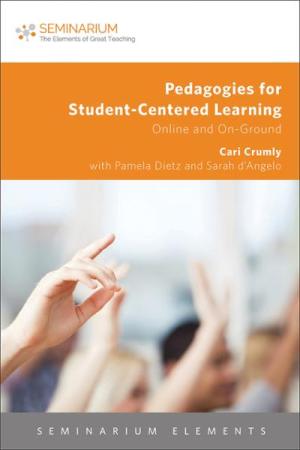
“Teachers are like new parents,” Cari Crumly asserts. “[T]hey don’t want to be told how to raise their children or, in this case, how to teach their students. Yet, sometimes, even the least-experienced teacher can introduce new methods that engage, encourage, and promote motivation and participation among students” (4). Crumly lays down the gauntlet repeatedly in this book: “student-centered learning will revolutionize your classroom and reinvigorate your career” (5). As Crumly notes, “student-centered learning is a learning model placing the learner in the center of the learning process. Students are active participants in their learning, learning at their own pace and using their own strategies; they are more intrinsically than extrinsically motivated; and learning is more individualized than standardized” (4). Certainly there are situations in which (and learners for whom) more external structure is appropriate, but Crumly makes a very persuasive case for those being the exception rather than the rule. The good news is that if you are a teacher-centered professor, Pedagogies for Student-Centered Learning gives you everything you need to make changes in your teaching. There is an historical timeline to remind readers that student-centered learning is not a new fad; it’s been with us for centuries. There is a section on teacher-centered classrooms, so we can check whether we are (or are not) as student-centered as we’d like to think we are. There is information on understanding your learning population. There are examples from real classrooms about how student-centered learning can play out, and how it benefits students. Each chapter contains questions for investigation. There is also a list of instructional tactics, with commonly used exercises and the advantages of using each one. Appendices and URLs point readers to even more resources, and Pamela Dietz adds a section on how to bring faculty, administrators, and tech support on board. If you are a visual learner, there are a number of graphical elements that will assist in your assimilation of the material presented. Fortress Press’s new Seminarium: The Elements of Great Teaching series is ideal for twenty-first-century readers. QR codes dot the pages – but don’t worry, if you don’t do QR codes, the URLs are available in footnotes. This book is full of great, useful information – and points readers to more useful information online. Certainly, there are some distractions (for example, misrepresentations of quotations from other thinkers at times). Definitions of student-centered learning can become repetitive over the course of the book. And Sarah d’Angelo’s chapter on student-centered learning in a theater classroom contains a bit more information than is likely to be useful for religious-studies and seminary faculty. But none of these detracts from the benefits of the book as a whole. I have been reviewing books on teaching for ten years or more – this is easily one of the most helpful books I have ever reviewed, and one to which I will return often. I have attempted student-centered learning in a number of courses and contexts; it can be very hard to pull off successfully, and does require a rethinking of our role as faculty. While Crumly suggests that “The student-centered classroom, whether on ground or online, is characterized by individualization, interaction, and integration,” I did wonder how this might work in an online environment (10). I look forward to further exploring these possibilities.

Topping’s book addresses implicitly his concern with contemporary misalignments in Catholic higher educational philosophy. He problematizes several trends that downplay truth-finding and inhibit the freedom of learning. It is his contention that education exists to guide students in learning to order their affections – ordo amoris – besides merely attending to the love of knowledge. For him, education should facilitate learners’ growth towards becoming whole persons. He claims that education is wrongheaded when its direct focus is only on developing skills and overcoming problems of incivility, toleration, and economic sustainability. His book makes clear a fear that in a highly de-Christianized western education, curricula can overestimate the value of the social sciences and overprize the importance of honing techniques, competencies, and self-esteem, and programs are ranked by what would benefit the economy and generate income for its graduates. He expresses this conviction in a variety of ways and contends that if these misaligned trends are not corrected, a crisis awaits the educational industry and even the progress of civilizations. Renewing the Mind is not a monograph devoted to defending an educational philosophy. Nonetheless, Topping invites rethinking current educational trends with a hope for substantive change. He introduces select humanist resources on education from classical antiquity, medieval and early modernity, along with papal writings by Leo XIII, John Paul II, and Benedict XVI. Excerpts include writings by Plato, Aristotle, Augustine, Basil the Great, Bonaventure, Hugo of St. Victor, Aquinas, Erasmus of Rotterdam, Michael de Montaigne, Hyacinthe Sigismond Gerdil, John Henry Newman, Maria Montessori, G. K. Chesterton, C. S. Lewis, Dorothy Sayers, and Christopher Dawson, among others. Readers will appreciate a bird’s-eye view of western educational ideology through the selected readings. These are organized in four parts: nine essays on aims of education, seven essays on matter of learning, nine essays on methods of teaching, and thirteen essays on renewing Christian orthodoxy, learning, curriculum, culture, and Catholic schooling in our milieu. Topping’s inclusion of Plato, Aristotle, Anglican Ronald Knox, and Protestant C. S. Lewis to represent “a philosophy of Catholic education” may puzzle some readers. Why did he not include other non-Catholic Christian thinkers in Catholic collection? Also, why did he collate a largely western, Eurocentric intellectual resource as a primer to the philosophy of Catholic education, when more Catholics today reside in Latin American and the Caribbean and only a quarter of Catholics live in Europe (Pew Research Study on Global Christianity, 2011)? There is no shortage of Catholic and non-Catholic thinkers from Latin America that are impacting Catholic higher education and the book could have benefited from their inclusion. If Topping hopes to reach an ecumenical readership and build bridges with non-Christian cultures, then the missing links of African, Asian, and Latin American Christian (and non-Christian) resources are necessary. If he would include pre-Christian Plato and Aristotle, why exclude Confucius and other schools of thought in other parts of the world on education, virtuous development, and ethics? Criticisms aside, the volume presents fine excerpts on pedagogy for parents, teachers, and administrators, and would be a good supplementary reader for an undergraduate course on the Catholic philosophy of education.
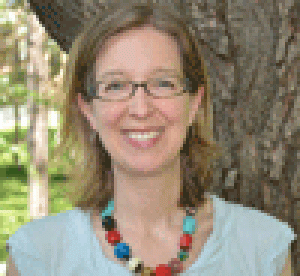
Kate Blanchard Editor’s note: Today’s blog is Kate’s final individual entry for this year of Stories from the Front (of the Classroom). Look for our final collaborative post on Tuesday May 19.For those of us who are lucky enough to work on a traditional academic calendar, the end of...
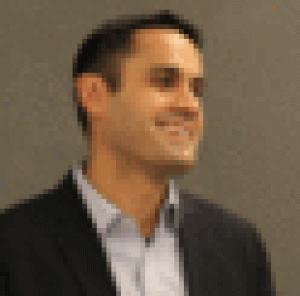
Eric D. Barreto Editor’s note: Today’s blog is Eric's final individual entry for this year of Stories from the Front (of the Classroom). Look for our final collaborative post on Tuesday May 19. One of the things I love most about teaching is the rhythm of the academic year: the...

An academic dean friend of mine once asked in frustration, "Why is this work so hard?!" I'm not sure I know the answer to that question. Some jobs are just more challenging due to the complexity of the work and...
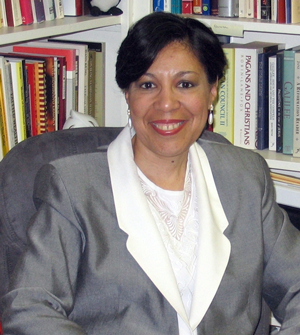
Loida I. Martell-Otero Professor of Constructive Theology Palmer Theological Seminary of Eastern University When those of the dominant culture express shock and dismay at events such as those that took place in Ferguson, Missouri in 2014, when they claim with indignation that this “should never happen again,” I think of a Puerto Rican proverb: “No hay peor ciego que el que no quiera ver (There is no worse blind person than the one who refuses to see).” Joseph Barndt observes that in the socialization process of being raced as white, the dominant culture is not only segregated from people of..
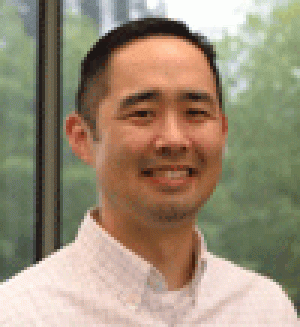
Roger Nam Editor’s note: Today’s blog is Roger’s final individual entry for this year of Stories from the Front of the Classroom. Look for our final collaborative post on Tuesday May 19. As my yearlong sabbatical in Korea comes to a conclusion, I have been thinking about the multiple seasons...

As the director of the Doctor of Ministry degree program at my school, I quickly grabbed The Handbook for Advising Graduate Students in hopes that it would serve as a companion for advisors in the program. Perusing the table of contents continued this hope. Many advisors of graduate students follow the axiom of teaching: we advise as we were advised. Advisors generally lack the time to reflect on and improve our practices of advising above or beyond what we ourselves received. Additionally, program directors rarely take the necessary time to invest in the pool of graduate advisors for the sake of our students. The Handbook for Advising Graduate Students attempts to invite reflective practice toward improving the graduate student experience. The book is a primer on the intention and attention necessary for the advising relationship. The table of contents alone is instructive for advisors to remember what matters in advising; the order moves from defining the relationship, to student-centered practices, to boundaries and sticky situations, to career support, and finally to developing a culture for student-centered advising. Part one covers the basics of the student-advisor relationship, namely offering different models for advising. Bruce Shore names three dominant models for how advisors or students select one another: pedigree (specialist relationship), patronage (for research funding), or kindred spirit (interpersonal connection) (10-11). Regardless of which of these models an advisor chooses, Shore argues it must be tied to the student’s interest and the advisor’s strengths. Chapter two takes up practices for student-centered advising. Shore makes clear that student-centered advising is not coddling or enabling; it is empowerment. He writes, “The most valuable thing an advisor can do with a graduate student is to welcome and empower her or him from the first encounter into the shared process of creating knowledge, conceptualizing grant applications, preparing conference presentations, writing for publication, helping with editing and so on” (22). Advising is mentoring for the academic vocation and encouragement toward career fulfillment. Shore emphasizes that time counts, especially time spent in providing feedback and being accessible (37). Advisors need to develop the skills that increase advisor accessibility and student empowerment. Shore proposes this work as an interrogative skill known as scaffolding. Scaffolding makes the student an active participant in the graduate school process and locates the advisor as the interrogator toward student progress. The advisor’s role is to regularly ask, “Where are you now? What is the next step? What can I do to help you get to that next step?” (41). This last question is an evaluative step that takes time and presence, yet also solidifies the relationship toward its necessary end – degree completion and employability. The book concludes with a chapter for degree program advisors. Advisor development or enrichment is key in developing a culture of student-centered advising. Just as the scaffolding process works for students, deans and program directors can use the scaffolding questions to assist advisors. Appendix 3 provides a checklist for assessing advisors according to student-centered practices. The Handbook for Advising Graduate Students is an important idea and assists program directors and advisors in recognizing the content and process of the advising relationship. The book raises important issues in advising graduate students, but is limited in its ability to coach advisors in the work. Shore offers several helpful tricks from his own work in advising, yet because his experiences is the only perspective included, the book lacks the best practices of advising that could come from a broader work engaging multiple types of advisors from multiple kinds of institutions. Shore’s volume gives reason to write a second book on advising graduate students. Advisors and program directors need a volume that gathers best practices from graduate student advisors and that also includes the voices of students. I would recommend that such a volume adopt a success case methodology that begins with asking recent PhD and professional program graduates about their experiences with advisors. A volume that gathers student stories and advisors’ self-understanding would be helpful in developing advisor training and enrichment exercises for doctoral and professional degree programs.
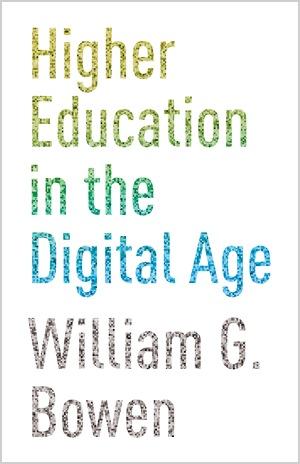
What is the unique value of higher education? What is effective instruction? Is there a cost crisis that is threatening the value and efficacy of higher education? Can technology offer a solution? These are a few of the questions posed by William Bowen and others in Higher Education in the Digital Age. This readable and thought-provoking book consists largely of lectures delivered by Bowen at Stanford University in 2012. The discussion of these issues is expanded to include other voices of leadership in higher education, all of whom contribute responses to Bowen’s original lectures. Bowen addresses the pressures facing university administrators who must balance all aspects of post-secondary education: cost to students, quality of education, financial support of research, and costs of personnel. The first two of three sections are lectures Bowen delivered at Stanford. The first lecture describes the economic issues facing institutions of higher education, including problems of affordability and the lack of productivity-increases in higher education compared to other industries. The second lecture implores leaders in higher education to address the dual issues of rising tuition and rising expenditures and to, at the very least, try to slow the rates of increase. His possible solutions look to technology (online or hybrid instruction) to increase productivity. In so doing, he opens up a larger discussion on what qualifies as actual learning and what costs (to quality of education and to funding for development and implementation) are acceptable. The discussion among higher education leaders and administrators in the third section of the book is its greatest value. The discussion hits on many of the economic and societal issues Bowen brings up: the flattening of family incomes, rising tuition rates, issues of completion rates, the pros and cons of MOOCs (Massive Open Online Courses), and issues raised by the existence of for-profit degree-granting institutions. All of the authors come from top tier research institutions: Harvard, Stanford, Columbia, and Princeton. One wonders how different the conversation would be if more publicly-funded universities, smaller liberal arts colleges, or community colleges participated in the discussion. While some of the writers acknowledge this bias and seek to qualify it by examining data from other types of institutions, their solutions (that require a large amount of funding) seem removed from the reality at other institutions. In spite of this limitation, the authors of Higher Education ask questions that invite reflection and conversation, given the financial situation in which many institutions find themselves. What value do we offer our students? Will the drive to increase productivity take that value away? Does technology offer opportunities to improve education while also increasing productivity? Can online learning maintain what is most valuable in a liberal arts education? The solutions offered are not a total fix (by the authors’ own admission), but the dialogue initiated in Higher Education presents administrators, faculty, and staff with an opportunity to rethink and innovate traditional teaching methods.
Wabash Center Staff Contact
Sarah Farmer, Ph.D
Associate Director
Wabash Center
farmers@wabash.edu